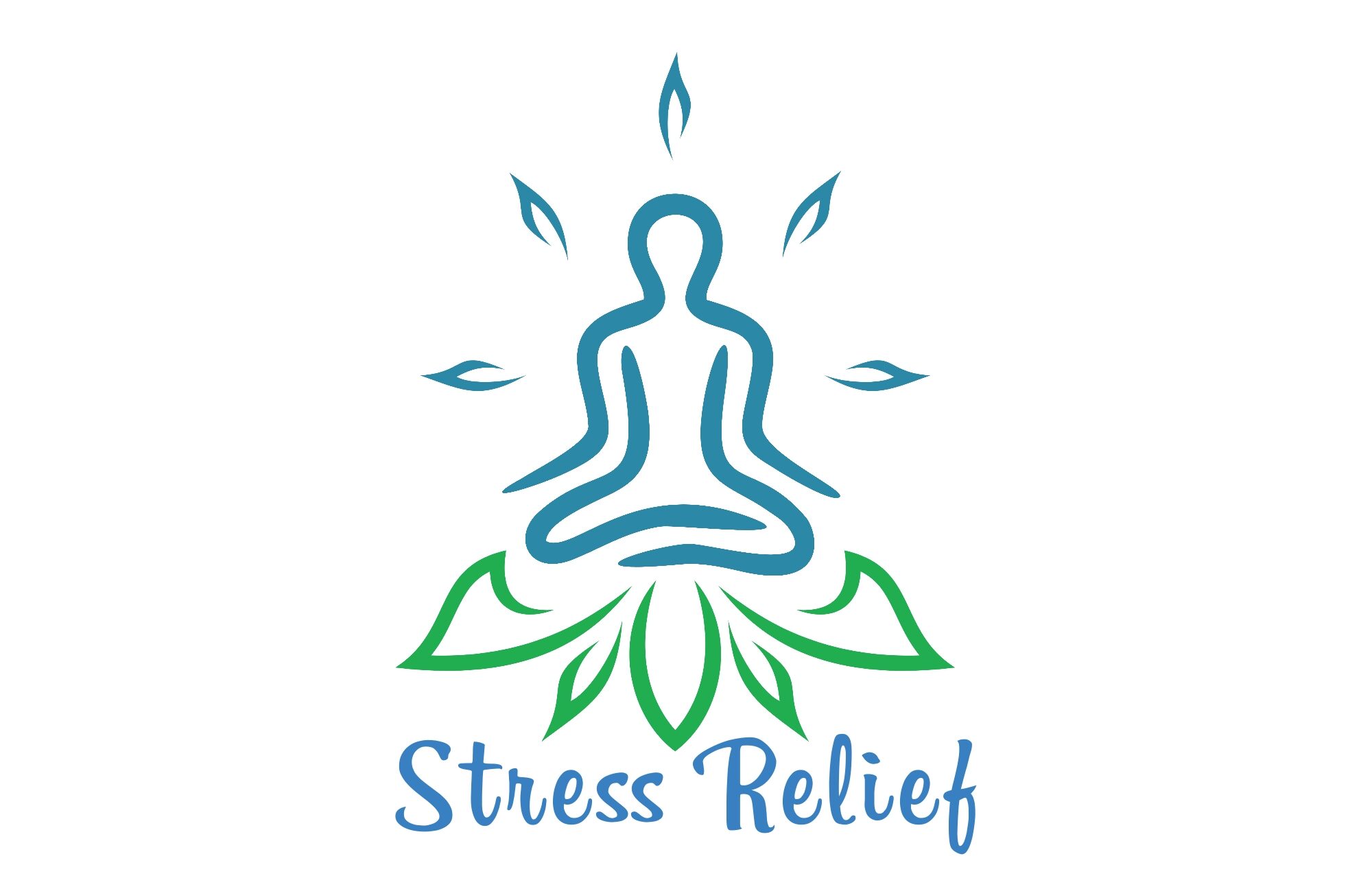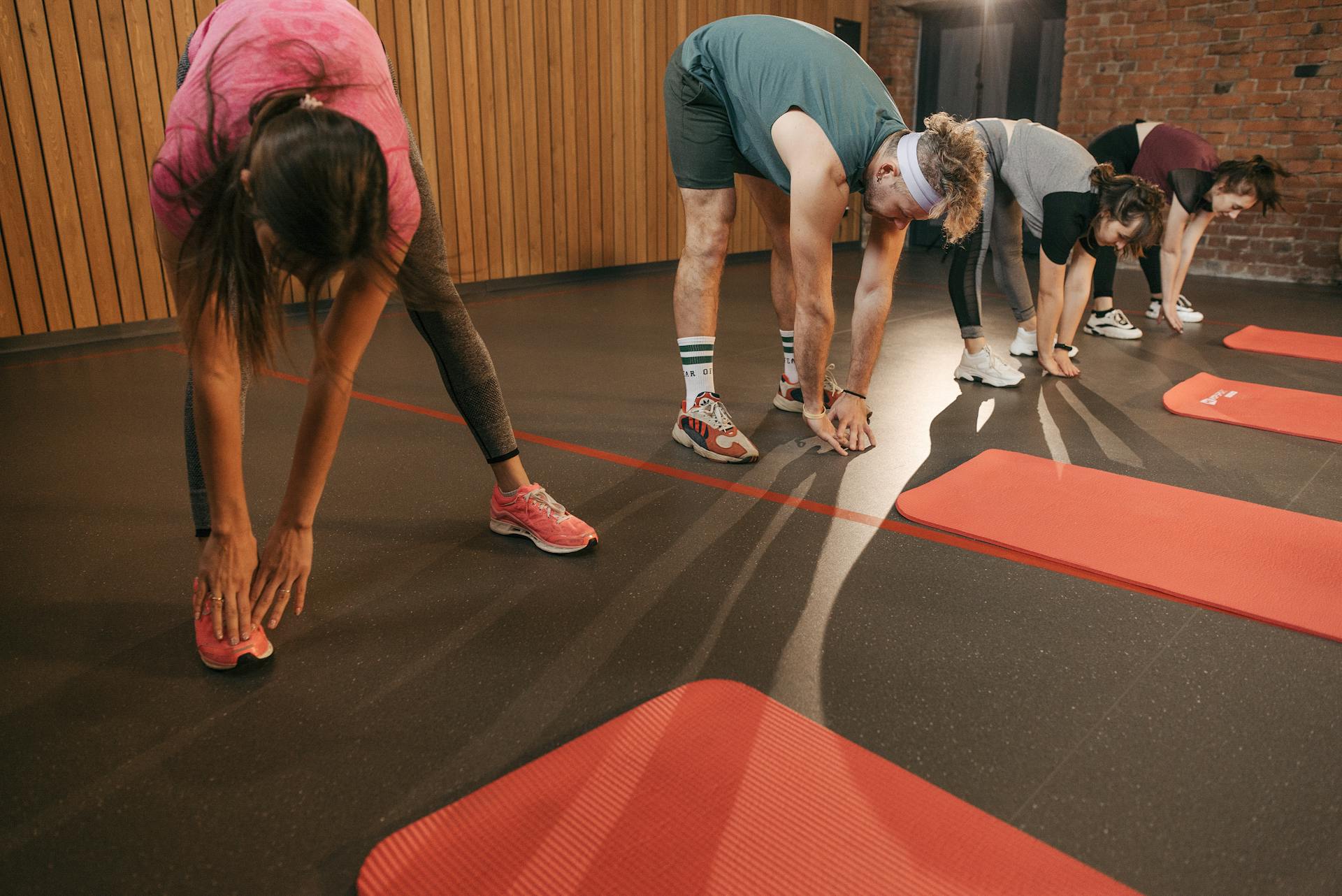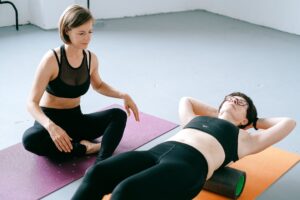Introduction
Stress has become a significant part of the lives of busy professionals, affecting not only their mental well-being but also their physical health. The demanding nature of their jobs can lead to high stress levels, resulting in feelings of overwhelm, fatigue, and burnout. It is crucial for busy professionals to incorporate quick stress relief exercises into their routines to mitigate the negative impacts of stress and maintain a healthy work-life balance. In this article we will know about some quick stress relief exercises for busy professionals.

1. Physical Exercise
Physical exercise plays a vital role in reducing stress levels for busy professionals. Engaging in regular aerobic activities helps release endorphins, the body’s natural mood enhancers, and promotes overall well-being.
- Brisk walking or jogging as a simple yet effective exercise
One of the simplest and most accessible forms of exercise for busy professionals is brisk walking or jogging. A quick 15-minute walk during a lunch break or in the morning can do wonders for stress reduction. This low-impact exercise increases the heart rate, releases tension, and clears the mind, allowing professionals to return to work with a renewed focus and mental clarity.
- High-intensity interval training for time-efficient workout sessions
For those professionals who are short on time, high-intensity interval training (HIIT) is an excellent option. HIIT involves alternating between short bursts of intense exercise and periods of rest. This type of workout can be completed in as little as 20 minutes and provides significant stress reduction benefits. It increases cardiovascular fitness, releases endorphins, and improves overall energy levels.
- Dancing to uplift mood while engaging in physical exercise
Dancing is not only a fun and energetic form of exercise but also an effective stress reliever. Whether it’s joining a dance class or simply dancing at home, this activity boosts mood by releasing serotonin and dopamine, the hormones responsible for happiness and pleasure. Dancing also encourages self-expression and allows busy professionals to momentarily disconnect from work-related stressors.
2. Practicing calming yoga poses to relax the mind and body
Yoga has long been recognized for its ability to reduce stress and promote relaxation. Incorporating a few simple yet powerful yoga poses into a busy professional’s routine can provide much-needed relief from tension and overwhelm.

- Child’s pose for releasing tension in the back and shoulders
Child’s pose is a restorative yoga posture that helps release tension in the back and shoulders, areas where stress tends to accumulate. By gently folding the body forward and resting the forehead on the ground, professionals can experience a deep sense of relaxation and relief. This pose also calms the mind, reduces anxiety, and quiets racing thoughts.
- Legs-up-the-wall pose for instant relaxation and improved circulation
Legs-up-the-wall pose, also known as Viparita Karani, is a rejuvenating posture that helps combat the negative effects of prolonged sitting. By lying on the ground with legs resting vertically on a wall, blood flow is improved, and tension is released from the lower body. This pose promotes relaxation, relieves swollen ankles and tired legs, and provides a sense of calmness and grounding.
- Corpse pose to promote complete relaxation and mental clarity
Corpse pose, or Savasana, is the ultimate relaxation pose in yoga. It involves lying flat on the back with arms and legs extended, allowing the body to fully relax and unwind. This pose not only rejuvenates the body but also clears the mind of stress and mental clutter. By surrendering to stillness, professionals can experience profound relaxation and gain mental clarity.
3. Incorporating Simple Stress Relief Exercises For Busy Professionals
Stretching is a simple yet effective way to release built-up muscle tension and improve flexibility. Incorporating a few minutes of stretching into a busy professional’s routine can make a significant difference in reducing stress levels and promoting overall well-being.

- Neck stretches to relieve tension and reduce headaches
Neck stretches are essential for individuals who spend long hours working at a desk or in front of a computer. Tension in the neck can lead to headaches and contribute to overall stress levels. Simple exercises like neck rotations, forward bends, and side stretches can release tension in the neck muscles, alleviate headaches, and promote relaxation.
- Shoulder rolls for reducing muscle tightness and improving posture
Shoulder rolls are an effective way to relieve muscle tightness and improve posture. Professionals can perform shoulder rolls by raising their shoulders up towards the ears, rolling them back, and then bringing them down. This exercise helps release tension in the shoulder and upper back muscles, reducing stress and promoting a more relaxed and open posture.
- Hamstring stretches for releasing tension from sitting for extended periods
Sitting for extended periods can lead to tightness in the hamstrings, contributing to muscle imbalances and discomfort. Stretching the hamstrings regularly can release tension and improve flexibility. Simple exercises such as sitting forward bends or standing hamstring stretches can be incorporated into a professional’s routine to relieve stress and promote better overall body alignment.
4. Breathing Techniques
Incorporating breathing techniques into a busy professional’s routine can have a powerful impact on reducing stress levels and promoting relaxation. Deep breathing exercises and mindful breathing practices help calm the nervous system, increase oxygen intake, and bring a sense of tranquility to the mind and body.

- Diaphragmatic breathing to activate the body’s natural relaxation response
Diaphragmatic breathing, also known as belly breathing, is a powerful technique for activating the body’s natural relaxation response. By taking slow, deep breaths that fully expand the belly, professionals can engage the diaphragm and stimulate the parasympathetic nervous system. This deep breathing technique promotes relaxation, reduces anxiety, and enhances overall well-being.
- Alternate nostril breathing to balance the mind and calm the nervous system
Alternate nostril breathing, or Nadi Shodhana, is a yogic breathing practice that balances the mind and calms the nervous system. By gently closing one nostril, inhaling through the other, and then exhaling through the alternate nostril, professionals can promote a sense of balance and harmony within the body. This breathing technique reduces stress, clears the mind, and enhances mental clarity.
- 4-7-8 technique for quickly inducing relaxation and reducing anxiety
The 4-7-8 breathing technique is a quick and effective way to induce relaxation and reduce anxiety. Professionals can practice this technique by inhaling deeply through the nose for a count of 4, holding the breath for a count of 7, and exhaling slowly through the mouth for a count of 8. This breathing pattern slows down the heart rate, activates the body’s relaxation response, and promotes a calm and peaceful state of mind.
5. Mindfulness and Meditation
Incorporating mindfulness and meditation practices into a busy professional’s routine can have profound effects on reducing stress levels and improving overall well-being. These practices enhance self-awareness, promote present-moment focus, and foster a sense of inner peace.

- Mindful eating for enhancing awareness and reducing stress-related overeating
Mindful eating is a practice that involves paying attention to the sensory experience of eating with full presence. Busy professionals can benefit greatly from incorporating this practice into their daily routines. By savoring each bite, being aware of hunger and fullness cues, and truly enjoying the nourishment of food, professionals can reduce stress-related overeating, improve digestion, and enhance overall well-being.
- Walking meditation to cultivate mindfulness while on the move
Walking meditation offers a unique opportunity for busy professionals to cultivate mindfulness even while on the move. Instead of focusing on reaching a destination, professionals can bring their attention to the physical sensations of walking, the sounds of their surroundings, and the rhythm of their breath. This practice promotes a sense of calmness, reduces stress levels, and enhances overall mind-body connection.
- Mindful journaling as a tool for reflection and stress management
Mindful journaling is a powerful tool for reflection and stress management. By setting aside a few minutes each day to write down thoughts, emotions, and experiences, busy professionals can gain clarity, process emotions, and reduce stress levels. Journaling provides an outlet for self-expression and self-reflection, allowing professionals to cultivate a deeper understanding of themselves and their stress triggers.
6. Building a meditation practice for sustained stress relief
Building a regular meditation practice is essential for sustained stress relief and overall well-being. Meditation enables professionals to train their minds to focus, cultivate awareness, and reduce stress levels.
- Guided meditation apps for convenient and tailored meditation experiences
For busy professionals who struggle to carve out time for meditation, guided meditation apps can be valuable tools. These apps offer a wide variety of meditation practices, ranging from short guided sessions to longer ones tailored to specific needs, such as stress reduction, sleep improvement, or focus enhancement. By utilizing these apps, professionals can easily integrate meditation into their daily routines.
- Loving-kindness meditation to foster compassion and reduce negative emotions
Loving-kindness meditation, also known as Metta meditation, is a practice that cultivates feelings of compassion and love towards oneself and others. This meditation involves silently repeating phrases such as “May I be happy, may I be healthy, may I live with ease” and extending these wishes to loved ones, acquaintances, and even difficult individuals. By practicing loving-kindness meditation, professionals can reduce negative emotions, foster a sense of connection, and promote overall well-being.
- Transcendental meditation for increased clarity and reduced stress
Transcendental meditation is a technique that involves silently repeating a mantra to achieve a state of deep relaxation and inner peace. By practicing this form of meditation for 20 minutes twice a day, professionals can achieve a state of restful alertness, reduce stress levels, and experience increased mental clarity. Transcendental meditation is particularly beneficial for busy professionals seeking stress relief and improved cognitive functioning.
7. Creative Outlets
Engaging in creative activities provides a much-needed mental break and can serve as a form of stress relief for busy professionals. These artistic outlets offer an opportunity for self-expression, relaxation, and emotional release.

- Painting or drawing as a means of self-expression and stress relief
Painting or drawing is a powerful way to express emotions, tap into creativity, and find solace from everyday stress. No matter the skill level, professionals can benefit from engaging in artistic activities. They can create their artwork as a form of self-expression or simply engage in coloring books, which are increasingly popular for their therapeutic benefits.
- Playing a musical instrument for relaxation and emotional release
Playing a musical instrument is not only a creative outlet but also an effective stress reliever. Busy professionals can carve out time to learn or play an instrument, even if it’s just for a few minutes a day. The act of engaging with music and focusing on the instrument can transport professionals to a state of flow, promoting relaxation, emotional release, and a renewed sense of energy.
- Writing or journaling to process emotions and relieve stress
Writing or journaling is a powerful tool for processing emotions and relieving stress. Busy professionals can benefit from setting aside time to write down their thoughts, feelings, and experiences. Whether it’s keeping a gratitude journal, writing in a diary, or practicing stream-of-consciousness writing, this creative outlet provides an opportunity for self-reflection, emotional release, and stress reduction.
Conclusion
In the fast-paced world of busy professionals, stress relief exercises are crucial for maintaining overall well-being and managing the demands of work and life. Incorporating physical exercise, breathing techniques, mindfulness and meditation practices, and engaging in creative outlets can significantly reduce stress levels, increase productivity, and improve quality of life. By prioritizing these quick stress relief exercises, professionals can cultivate a healthier work-life balance and experience a greater sense of peace and fulfillment.
FAQs(Frequently Asked Questions)
Can these quick stress relief exercises be practiced at any time during the day?
Yes, these quick stress relief exercises can be practiced at any time during the day. Incorporating them into daily routines as needed can provide immediate relief from stress and enhance overall well-being.
How long should I dedicate to each exercise for optimal stress reduction?
The duration of each exercise can vary depending on individual preferences and schedules. It is recommended to start with shorter durations, such as 10-15 minutes, and gradually increase the time as desired. The key is to find a balance that works best for personal needs and constraints.
Can these techniques be used together to maximize the benefits?
Yes, these techniques can be used together to maximize the benefits of stress reduction. Combining different exercises, breathing techniques, mindfulness practices, and creative outlets can provide a holistic and comprehensive approach to managing stress and promoting overall well-being.
What are the long-term effects of regularly practicing these stress relief exercises?
Regularly practicing these stress relief exercises can have long-term effects on overall well-being and stress management. They can lead to increased resilience, improved mental and physical health, enhanced focus and productivity, and a greater sense of fulfillment in both personal and professional life.
Are there any precautions or contraindications I should be aware of?
While these stress relief exercises are generally safe and can be beneficial for most individuals, it is essential to listen to your body and adapt the exercises to personal comfort levels. If you have any pre-existing medical conditions or concerns, it is advisable to consult with a healthcare professional before starting any new exercise or stress relief regimen. Remember to always prioritize your safety and well-being.




